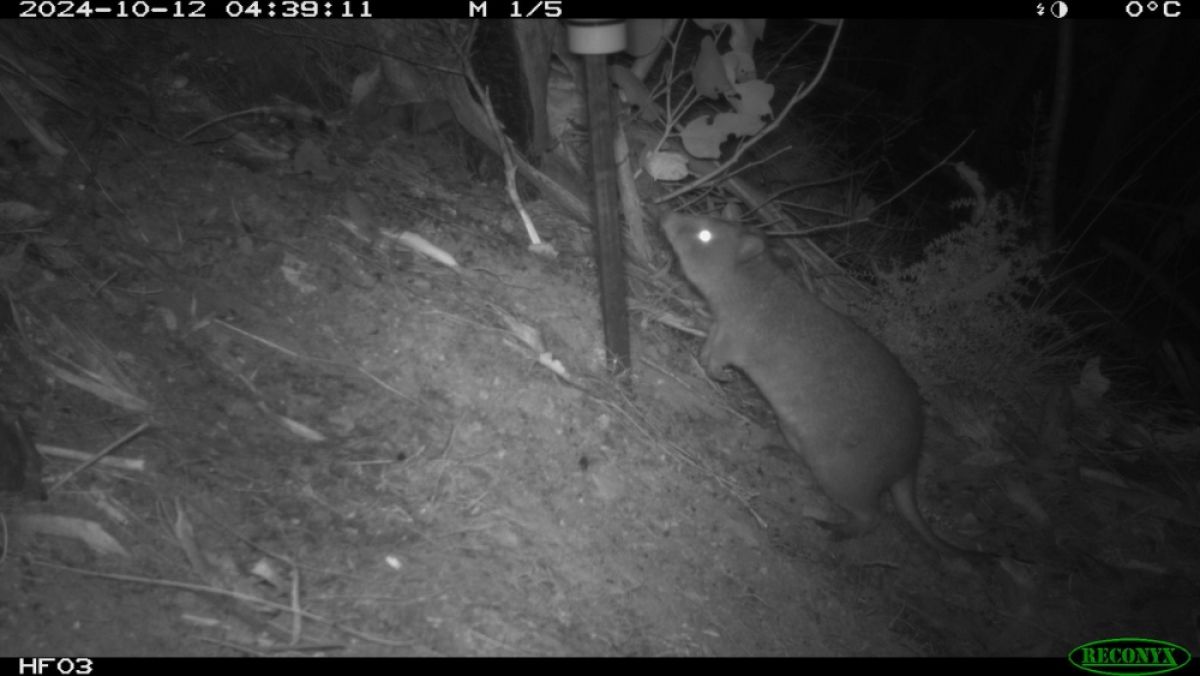The 2019-20 Black Summer bushfires had a devastating impact on one of Victoria’s endangered native species – the long-footed potoroo.
The fires burnt 1.39 million hectares of forests and parks in Victoria, impacting nearly 80% of the long-footed potoroo’s known habitat.
Five years on, a remote camera monitoring program has confirmed that the elusive marsupial is recovering.
Long-footed potoroos are only found in 3 places in the world, one of which is in the Barry Mountains in north east Victoria.
'There was a real concern about the ability of the potoroos to survive and recover from the fires,' DEECA Natural Environment Programs Officer, Elizabeth Wemyss said.
In October 2020, the monitoring team took remote sensing cameras into some of the burnt areas to find out if the potoroos had survived.
'We really didn’t know what we were going to find,' Elizabeth said. 'There were fears that the population may have been completely devastated.'
To their relief and excitement, potoroos were detected at 35 of the 120 sites.
'I can’t describe how happy we were to find potoroos existing in this landscape when we collected the cameras. It was such a relief.'
Monitoring has been repeated annually and in combination with a targeted fox control program, potoroo detections are increasing each year.
'It has been such a wonderful feeling retrieving the cameras and realising that the potoroos not only survived the initial impacts of the bushfires, but now five years on are increasing in numbers and range.'
Monitoring the long-footed potoroos
Annual monitoring of the potoroos has recorded an increase in detections using the cameras.
- 2020 - 29.17% of sites
- 2021 - 36.49% of sites
- 2022 - 37.4% of sites
- 2023 - 44% of sites
- 2024 - 52.4% of sites



Say truffles – attracting the potoroos
The remote sensing cameras are triggered by movement and heat.
The lure – a special concoction of peanut butter, oats, golden syrup and truffle oil – is used to attract the potoroos to the cameras.
More than 300,000 images were taken during the 2024 monitoring period and analysed.
Data collected by the cameras is uploaded to the Victorian Biodiversity Atlas.
In 2024 more than 57 species were detected on the cameras including an increased detection of long-nosed bandicoots from one site in 2020 to 49 sites in 2024.




Long-footed potoroo monitoring project video
Project partners include the Arthur Rylah Institute for Environmental Research, Parks Victoria and Taungurung Land and Waters Council.
The project forms part of the Victorian Government’s $32 million Protecting Biodiversity Initiative.
Predator control aids survival
Because of their small size and weight, long-footed potoroos face an increased risk from predators, particularly foxes and feral cats following the fires.
To protect them, a targeted fox-baiting program was expanded in the Barry Mountains area following the Black Summer fires. Continuation of predator control programs will be an important part of the future protection of this special, rarely seen threatened species.
Page last updated: 18/02/25